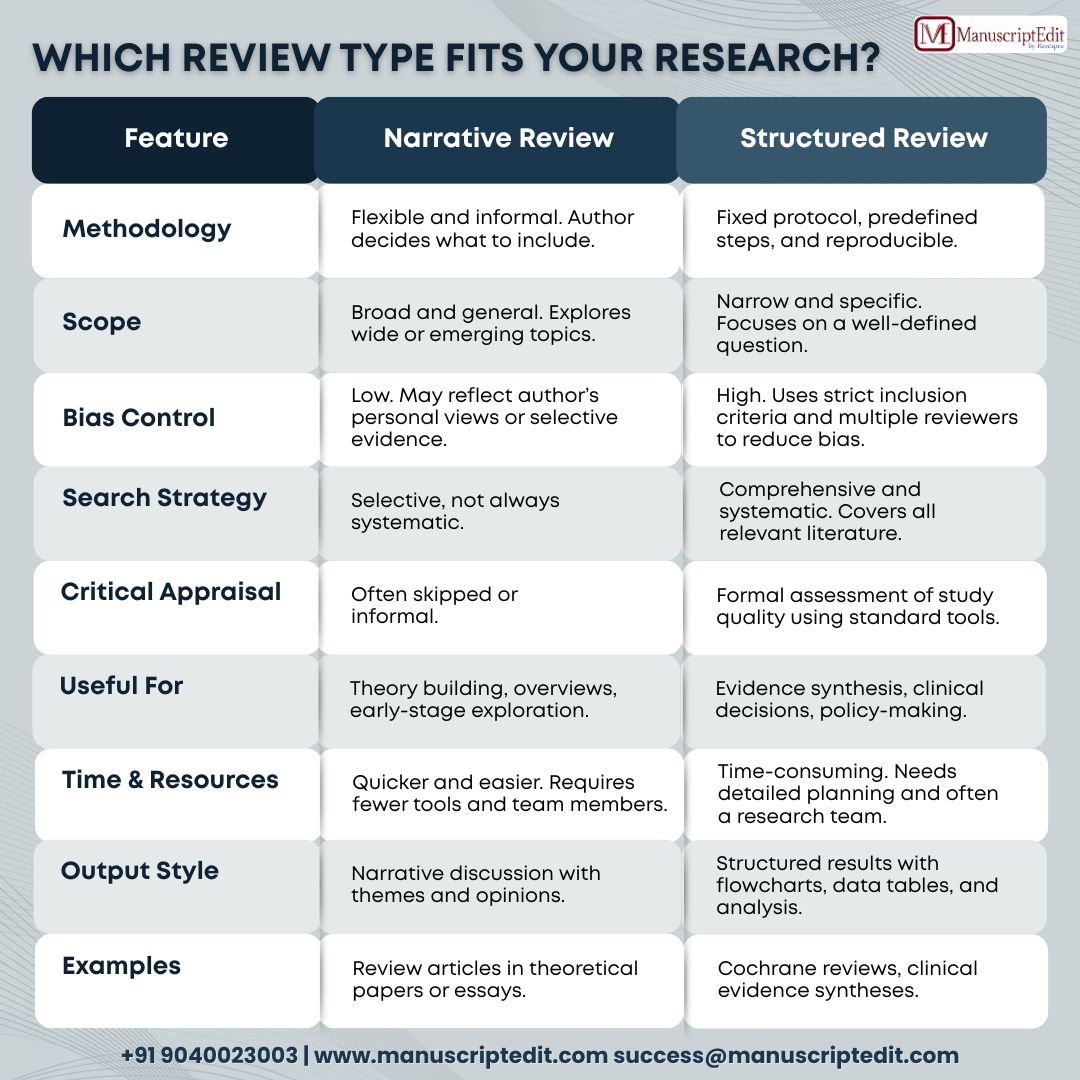
Let me tell you a story—a tale of one lost researcher, a looming deadline, and the eternal struggle of structured vs. narrative review.
Yup, that lost researcher was me.
One minute, I was happily typing away, sipping on cold coffee and vibing to my “focus” playlist, and the next, I was staring at my screen as if it had personally betrayed me. My supervisor had just emailed, “Make sure your literature review is structured. Or narrative. Depending on your goal.”
Depending on my what?
Cue mild academic panic.
But fear not, fellow knowledge-warrior. I did the Googling, the crying (just a little), and the reading—so you don’t have to. Here’s the breakdown—straightforward, funny, and valuable. And yes, there’s a downloadable chart because I’m thoughtful.
What is a Narrative Review?
A narrative review is kind of like telling the narrative of what research exists on topic. You choose the papers you think may be relevant to the question, read them, and then write a summary and interpretation.
It is fluid, free flowing, and a great way to explore broad topics. Narrative reviews are common in the humanities and social sciences, and in areas with plenty of research but not much standardization.
You may think of it like ordering your favorite pizza and binge watching a series on Netflix. You get to select the shows (studies) you have interest in, you tell the story through the theme of the series (research question), and you get to provide your perspective on which episodes are best (or worse!).
This model is a little subjective though. There are not typically strict rules, so reviewers may choose different studies or come to different conclusions.
Despite the nature of narrative reviews being subjective, narrative reviews of the many forms of literature available are great for telling the story of the big picture.
What is a Structured Review?
Think of a structured review as a scientific recipe. You follow an agreed procedure. Such as deciding on a research question, then deciding on your inclusion and exclusion criteria, through to documenting every step you have taken.
This is a structured literature review and is often used in medical, technical, or data-heavy areas of research. You will frequently find them used in systematic reviews, or meta-analysis, where accuracy is paramount.
So, if the narrative review is like essay writing on the fly, the structured review is akin to putting together IKEA furniture with a manual, a list of precise parts, and specific instructions.
A structured review is what you want if you would like your work to be reproduced, made transparent, and treated with respect.
They take more time, but to the reviewer, they really show clarity with the research. And by the way, ManuscriptEdit structured review support is available to support you at every step!

When to Use Each Type
Here’s the million-dollar question: when to choose a review type?
Use a narrative review when:
- Your subject area is broad or new.
- You are writing for a lay audience.
- You want to consider theories or background.
Use a structured review when:
- You need evidence-based conclusions.
- You are reviewing clinical trials, interventions, or policies.
- You intend for others to use the review to support quantitative analysis.
Remember that both types have value and it all depends on the needs of your research. You wouldn’t want to wear a tuxedo to the beach, right?
Formatting & Publishing Tips
Formatting a review paper is more than just a font size and referencing style (although, yes, that is important too!). It is about clarity, consistency, and intentionally following the journal’s instructions.
Whether it’s a narrative literature review or a structured literature review, you should always:
- Use clear subheadings (especially for structured reviews).
- Avoid walls of text and use bullets, tables, and visuals.
- Check the journal’s guidelines for word limit, style, and structure.
- Cite responsibly (and don’t over-cite!).
Pro tip: A journal hates nothing more than mystery methods formatting, and journals love clean formatting. If your methodology section resembles a secret recipe from Grandma’s cookbook, revise it!
Do you still need help? ManuscriptEdit is here to help with all of your formatting and editing needs!



